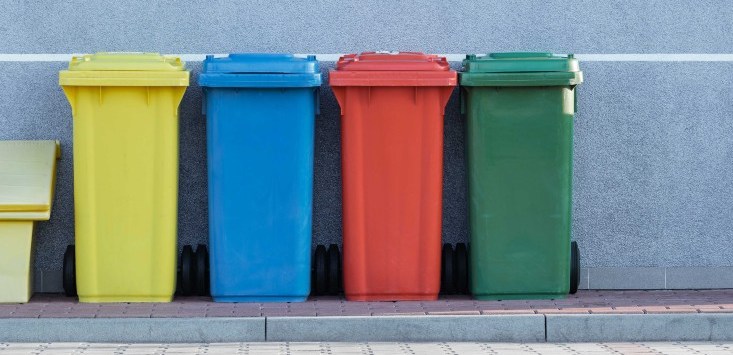
Source: Unsplash/Pawel Czerwinksi.
Did you know that each year enough bubble wrap is created globally to cover the distance between the earth and the moon? And that last year 583 billion plastic bottles were produced, a scary 100 billion more than five years ago?
These are some frightening statistics, especially when scientists, researchers and environmental specialists have been begging for us to stop.
For SMEs, it can be hard to know where to start or what to do when it comes to understanding our environmental footprint, especially when there are so many touchpoints in the supply chain.
This is where product stewardship can come into play.
It acknowledges that anyone designing, manufacturing and selling products has a responsibly to ensure those products or materials are managed in a way that reduces environmental and human health impacts throughout the life-cycle and across the supply chain.
In short, it’s about looking at the touchpoints of a business and understanding how each element will impact the world.
It also aims to reduce waste generation through better design and manufacturing of products, looking at smarter ways of doing things and using innovation to make materials that are easier to recover, reuse and recycle.
Product design and consumer education have a great role to play to reduce the impact of products.
For example, consumers have had a heavy reliance on recycling via curbside recycling over the decades. But not all products or materials can currently be recycled this way. As a result, a special waste stream sometimes needs to be created to ensure the products are collected and recycled correctly — this is a product stewardship scheme at work.
Examples of product stewardship schemes
REDcycle
The REDcycle Program is true product stewardship model where manufacturers, retailers and consumers are sharing a responsibility in mitigating the impact soft plastics have on the environment.
Australian Battery Recycling Initiative
This is a fantastic group and initiative organised by battery manufacturers, recyclers, retailers, government bodies and environment groups to promote the collection, recycling and safe disposal of all batteries.
Compost Connect
Australia’s first national composting service connecting packaging and food service businesses with the organic waste industry, Compost Connect is an emerging product stewardship scheme helping to grow access to organic recycling for both food waste and compostable packaging.
Product stewardship schemes are a great way to make real impact in your industry and here are few tips to get started.
Product stewardship scheme tips to get started
Don’t reinvent the wheel
Is there already a scheme or initiative that exists that you could join? If not, are there any existing supply chain flows that you could leverage for your reverse logistics? For example, supermarket delivery trucks go back to the warehouse to reload, so the marginal cost of drivers collecting used plastic bags from previous delivery and bringing them back to the warehouse could be relatively small.
Start small
While the wide availability of collection points is crucial for a product stewardship scheme to be successful, start small to ensure everything runs smoothly before you expand at the national level. It could be helpful to run a small trial with a selection of locations, both urban and remote.
Defining the mission of the scheme very clearly and agreeing on a set of key performance indicators (KPIs) that will measure the success of the scheme is also critical and will provide the necessary feedback to be able to steer it in the right direction
Long-term financial sustainability
This is about the long-term financial sustainability and self-sufficiency for a scheme that is based on voluntary participation. Who pays what, in which form and how to avoid “free-riders”? There are various options available and your choice needs to fit your product and mission. Government funding is also sometimes available, in the form of grants, policy or knowledge sharing. To learn more about how to fund product stewardship initiatives, watch this webinar by the Product Stewardship Centre of Excellence.
Cover your back
Ensure you have the right structure (usually a not-for-profit) and governance in place. You might need to reach out to the Australian Competition and Consumer Commission (ACCC) if you are engaging with your competition. The Product Stewardship Centre of Excellence has resources that are also highly recommended.
Whether big or small, we can all do our part to help the environment. The best thing anyone can do is to start today.


COMMENTS
SmartCompany is committed to hosting lively discussions. Help us keep the conversation useful, interesting and welcoming. We aim to publish comments quickly in the interest of promoting robust conversation, but we’re a small team and we deploy filters to protect against legal risk. Occasionally your comment may be held up while it is being reviewed, but we’re working as fast as we can to keep the conversation rolling.
The SmartCompany comment section is members-only content. Please subscribe to leave a comment.
The SmartCompany comment section is members-only content. Please login to leave a comment.